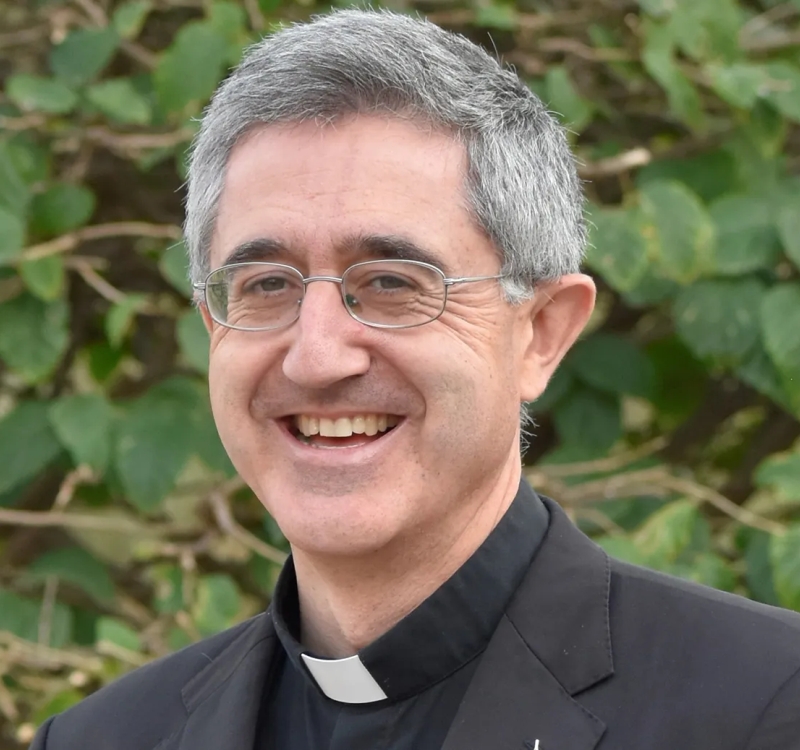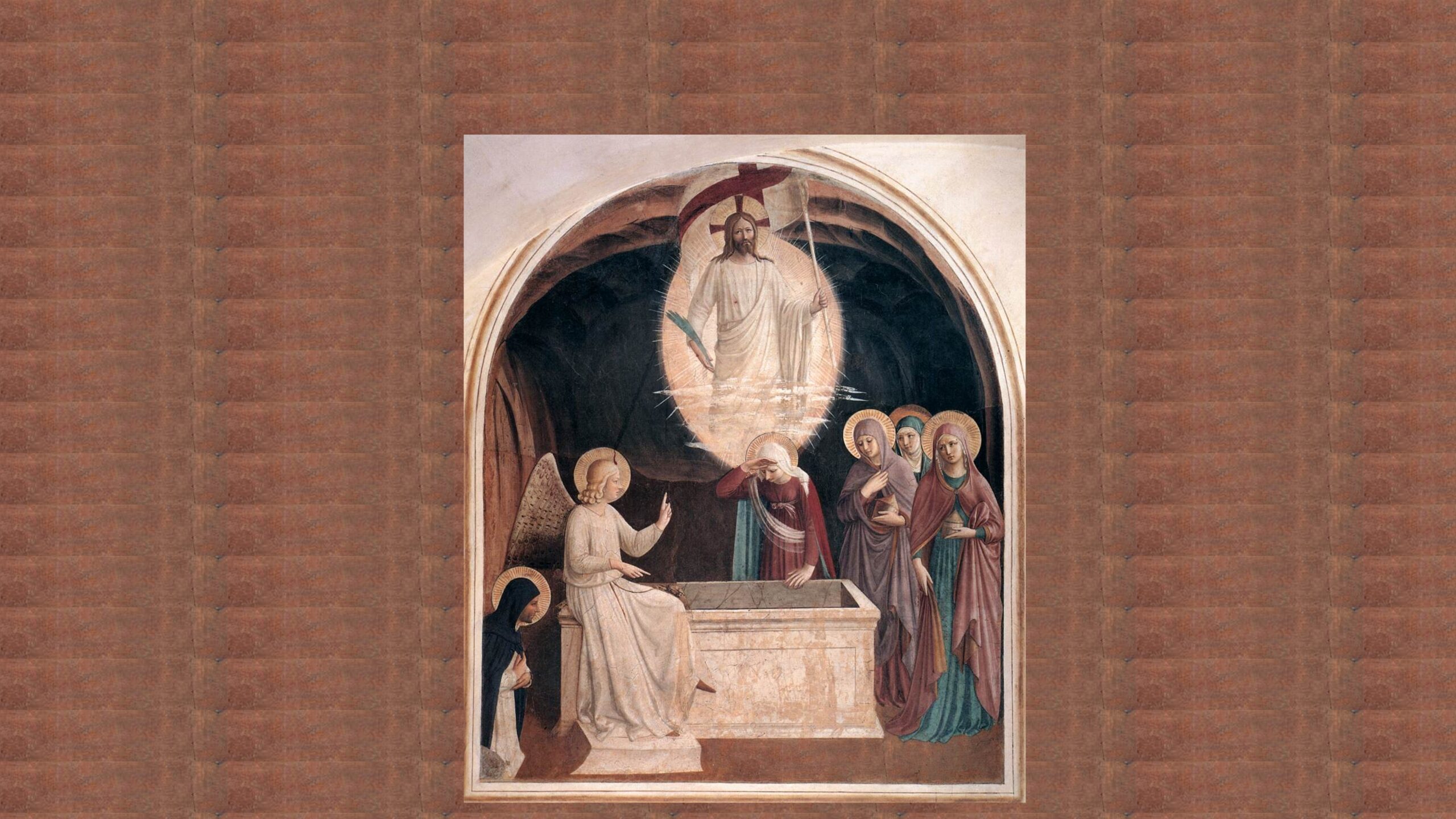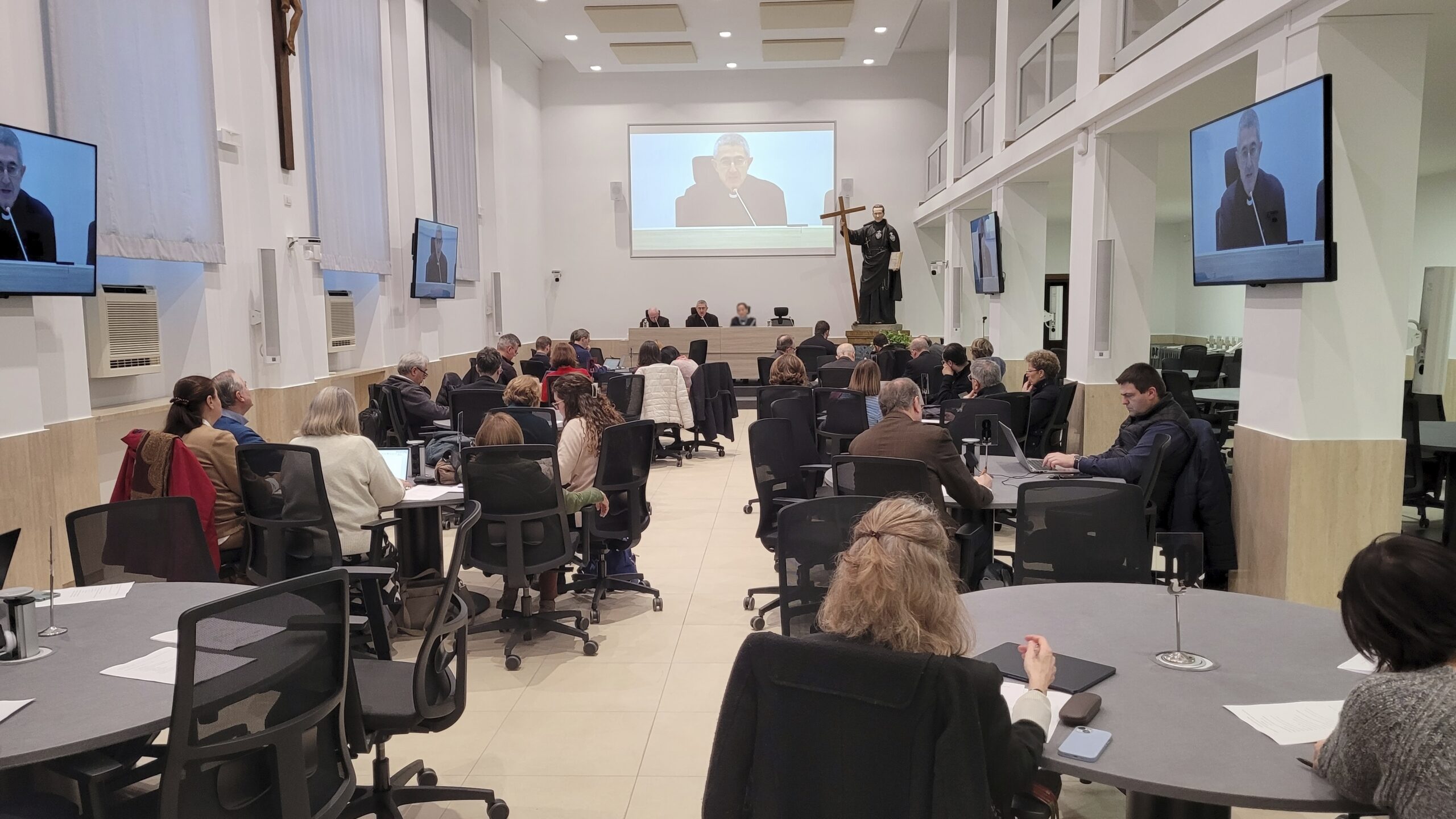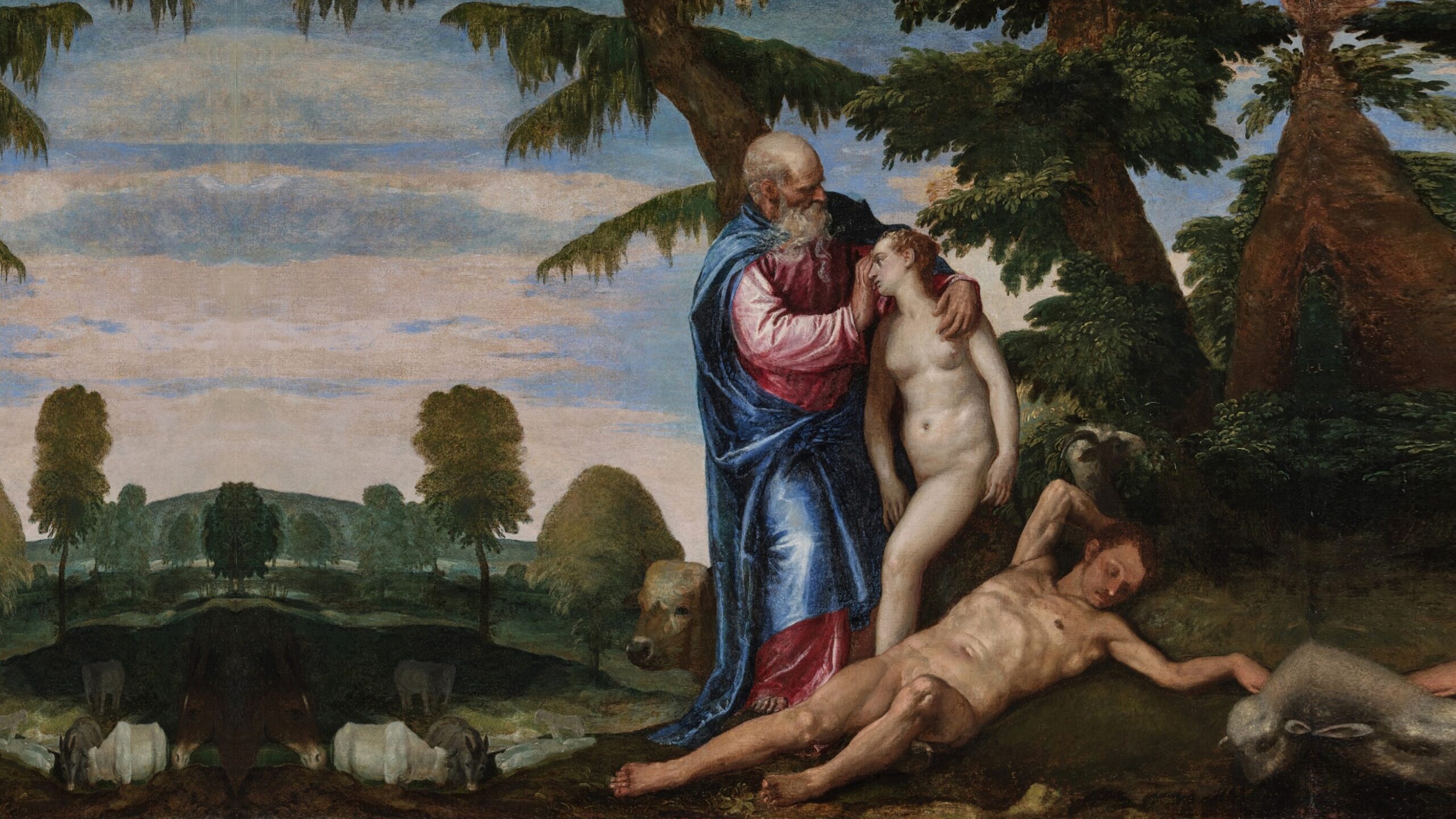The poet Luis Rosales recounts that when he was a child in Granada, on the morning of Holy Saturday (when the resurrection was then celebrated), it was customary for all the children to ring clay bells at the same time when the cathedral clock struck ten in the morning, breaking the silence of mourning. Rosales describes this scene, saying that when the bells began to ring, such joy spread through the streets that it seemed like “a wall of joy filling the street”, as if “a rising mountain” entered their little ears. And that he wanted to be “everywhere, in every window, at the same time, crying with joy to see that the world is not a dream.”
Easter: we cry with joy to see that the world is not a dream. The resurrection is real, indeed it is the foundation of all that is real, because it tells us that God so loved the world that he wanted to take it to himself, to open his eternity to it, to communicate his glory, which in Hebrew also means weight or substance. St. Luke exclaims in his Gospel: “Truly (ontōs): the Lord is risen” (Lk 24:34). And the greeting of the Christian East repeats: “Christós anésti! Alétheios anésti!” (“Christ is risen! He is truly risen!”).
In order to celebrate the tangible reality that Jesus’ resurrection offers to the world, we must relate it to other real experiences in our lives, and above all to the reality of love. According to the philosopher Robert Spaemann, we love a person when he or she becomes as real to us as we are to ourselves. For those who love, not only their own pain or joy is real, but also the pain or joy of the beloved. If the resurrection is real, it must be because it has the reality of love. It must be because it makes our loves more real.
This is the meaning of faith in the resurrection of the body. The body is the place of interpersonal encounter, the place of love. We want the body to rise again, says Dante. And not only for ourselves, but also for our mothers, our fathers, our loved ones: so that we can embrace them. Indeed, for many people the question of the resurrection becomes concrete in the desire to be reunited with their loved ones. When I teach classes on the sacrament of marriage, one question inevitably comes up, and those who ask it usually do so with a sense of urgency: Will our relationship as husband and wife endure beyond death? Will our love, too, be resurrected?
1. The Relationships that Save Us
The answer is that not only will our relationships be resurrected, but we will be resurrected thanks to our relationships. This can be gleaned from a phrase of St. Ignatius of Antioch, addressed to some who were neglecting their Christian life: “It would be better for you to love, so that you may be resurrected. “ The biblical idea of resurrection has been described by Joseph Ratzinger as “dialogical immortality,” that is, an immortality that we do not possess in ourselves, but only because we live in relationship, and primarily in relationship with God.
In fact, the hope in the resurrection of the flesh, which seems unattainable when one looks at a corpse, matures in Israel when this people experiences the power of its covenant with God. As Jesus says in the Gospel, if the living God wants to call himself “God of Abraham, Isaac and Jacob,” if he wants the names of the patriarchs to define his own name, then Abraham, Isaac and Jacob must be alive. This is realized in the resurrection of Jesus, the Son of God made flesh. Jesus lived his relationship with the Father with such rootedness and abandonment that death could not hold him in its hands. A husband, out of love for his wife, can say: “Heaven itself would not be worth it for me if I could not be reunited with my wife there.” This may be an exaggeration, but it is not when it is applied to the Father: his own heaven would be unbearable to him if, to put it absurdly, his Son Jesus were not there. And that is why he raised him from the tomb.
We understand, therefore, that the cause of Jesus’ resurrection is the bond between Jesus and the Father. In the Sanctuary of Manoppello, in Abruzzo, there is a relic with the face of Jesus. According to tradition, it is the cloth that covered his face after his death. The image engraved on the cloth is said to correspond to the moment when Jesus opened his eyes at his resurrection. If, according to St. Augustine, the first thing a child sees at birth is the friendship of its parents, which reminds the child that it comes from love, then the first thing Jesus saw at his resurrection was the love of the Father, which reminded him that he was the Son of his love.
The love between Jesus and his Father is also the cause of our resurrection. In fact, Jesus has inextricably linked his love for us to the bond of love that unites him to the Father. In the first glance of the Risen Christ that the icon of Manoppello shows us, the joy that shines in his eyes does not come only from seeing the Father. This joy also comes from seeing that we, his own, are also in the Father. With his resurrection, he set a new course for the human family, directing it to the heart of the Father, and now he looks at us in the Father, that is, in the fullness he has attained for us, preparing a place for us.
Our resurrection, therefore, passes through the bonds in which Jesus is present to bring us to God. For this reason, a married couple can take comfort in knowing that even if the sacramental bond is broken by death, their relationship will live on. Not only that, but their relationship lived in Christ is a source of eternal life for them. When the Lord resurrects us, He will do so through our bonds. He will ask for John’s son, for Anna’s husband, for Peter’s parents; He will ask for Agnes’s teacher, or Mary’s parish priest, or Stephen’s friend, and He will recognize us because of our bonds, just as many recognize Innocent III as the Pope of St. Francis of Assisi. Then we will hear this call. Will we recognize ourselves in it? The resurrection of Jesus urges us to live fully the bonds brought to God by Christ: the bond between husband and wife, between parents and children, between a pastor and his faithful… It is good that we are bound together so that we can be resurrected!
2. Cultivating Saving Relationships
At the same time, however, the resurrection urges us to live these bonds well. To spouses who wonder if their bond will last after death, we can respond that it depends on them, too. In fact, by rising from the dead, Jesus not only opened up a different, better life, but also made eternal the life we already live. The resurrection illuminates the time that passes in this world: a time to choose who we want to be forever. Another quote from Luis Rosales says: “Death does not interrupt anything. Thanks to the resurrection of the flesh, our earthly actions will be valid forever. Therefore, the resurrection does not invite us to forget this world, but to seek what lasts forever.
We can then understand what the philosopher Julián Marías meant when he said: “The things that really count in this life are those to which death is not an objection; […] those to which I radically say ‘yes’; those with which I define myself because I desire them and want them forever, because without them, I could not really be myself.” Death is an objection to all those things that, if we did them forever, would end up boring us. Death is not an objection to all things that have infinite depth and do not exhaust or tire us.
The resurrection is therefore not only a future gift, but also a present task. The love of the Risen One reaches us through the bonds we experience in Christ and urges us to choose together great and beautiful tasks with which we can identify ourselves forever. For example, when a married couple opens itself to life in order to welcome a child and raise it in Christ, the unity of the two is linked to an eternal, inexhaustible project: the project of a person. And when the friendship between two missionaries is based on the work of bringing the Kingdom of Christ to people, this friendship carries within itself a seed that can never weary us. This is the consequence that Saint Paul draws from the resurrection: “Seek the things that are above.” This means seeking a way of living together that is capable of adapting to and breathing the eternal atmosphere of love that belongs to Christ and the Father.
3. Transforming Our Relationships
Regarding spouses who are concerned about the survival of their love, on the one hand we can tell them that the relationship they live in Christ will be a source of resurrection for them (1). On the other hand, we should also say to them that they are called to nurture and cultivate this relationship so that it will be a relationship that saves them (2). But there is something else to add. Our love must be transformed if it is to enter the resurrection. This world is not a dream, but neither is it the ultimate reality that will only be realized in the future home. Spouses who wonder if their relationship will last may consider other marriages in which death may seem almost like a liberation. Saint Victoria Rasoamarivo, for example, suffered while forgiving her husband’s mistreatment. In her case, her relationship with her husband would have to change radically in order to be restored, and this would require the conversion of her husband.
Not only that, but the change would affect the very way the relationship is lived out. Couples who rejoice at the idea that their relationship will remain in the resurrection may be frightened when they discover that another notoriously complicated relationship will also remain, that with the mother-in-law. So they understand that their relationship will have to be transformed and will no longer be what we know here. Relationships will change because we will no longer be each other’s way to God, mediating his love and gifts to one another. But we will relate to each other from our full rest in God. For this reason, marriage as such will disappear, because it belongs to marriage to be a mutual way to God (Mt 22:23-32). Parents are already experiencing such a change in their relationship with their children. Education is successful when parents cease to be the radical mediators in their children’s relationship with God, that is, when this relationship springs directly from the hearts of their children. Consecrated virginity anticipates on this earth the newness of Christ’s risen love. The fact that there are Christians who feel this call to consecrate themselves to him in virginity shows that the expansive wave of his resurrection continues to touch us.
We can therefore turn our gaze to the Virgin Mary in order to summarize what we have said. The Regina Coeli, which we recite during the Easter season, invites Mary to rejoice because her Son has risen “just as he said” (sicut dixit). Part of the joy of the resurrection is the fact that Christ had foretold it. Christ was able to announce it because he had complete trust that the Father would never forsake him, a trust that motivated Jesus’ anticipated gratitude for all the Father’s gifts. The resurrection thus appears as an event inseparable from the word that gives it meaning, the word of love exchanged between the Father and the Son. The events of human life are never mere facts, but always part of a meaningful narrative. The resurrection is a fact in the fullest sense, because in it the fullness of meaning is manifested, when the whole of history is included in the dynamism of the gift that the Father makes to the Son and in the Son’s response of love.
Mary herself, to whom this “sicut dixit” is sung, had her whole life placed in this dialogue of love between the Father and the Son. Her cousin Elizabeth had already told her that she was blessed because she believed the angel’s promise (cf. Lk 1:45), sicut dixit. Mary lived her whole life on the basis of her relationship with Jesus, so much so that she is never mentioned by name in John’s Gospel but is simply called “the Mother of Jesus.” Mary also allowed herself to be challenged and transformed by Christ. That is why she was able to accept Jesus’ words about his resurrection on the third day, words that had escaped the disciples. This is why Jesus was able to include Mary fully in his relationship with the Father, to the point that she already has a resurrected body. Now Mary participates with her whole feminine being in the expansion of her Son’s resurrection. Having united her sufferings to those of the crucified Christ, she now shares in the joy that resounds in the Easter bells. In her body, all that is feminine and maternal is united to the risen body of Christ, to give us the confirmation that, as in the awakening of Adam after the creation of Eve, we can live awake. This joy resounds in the Regina Coeli: He is truly risen, he is real, the world is not a dream!
Share this article
About Us
The Veritas Amoris Project focuses on the truth of love as a key to understanding the mystery of God, the human person and the world, convinced that this perspective provides an integral and fruitful pastoral approach.



